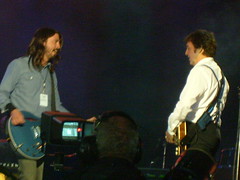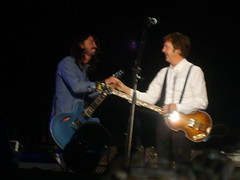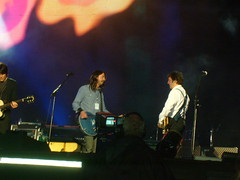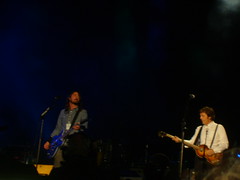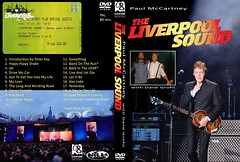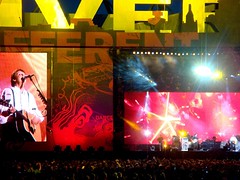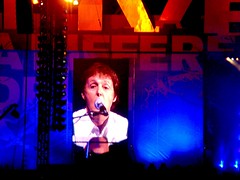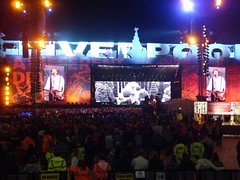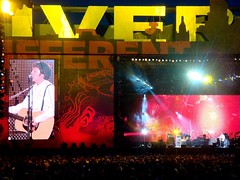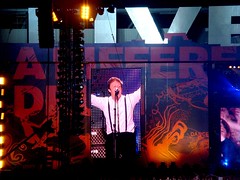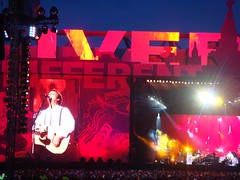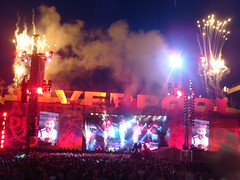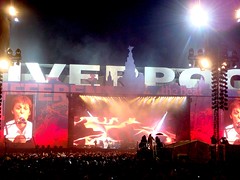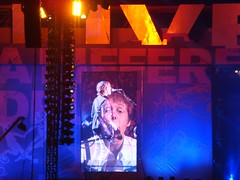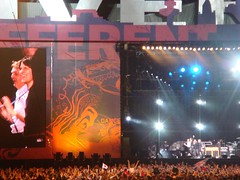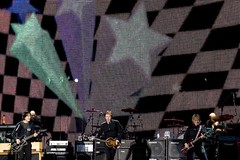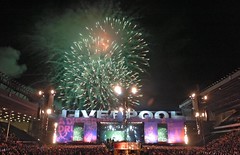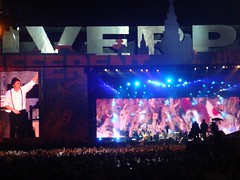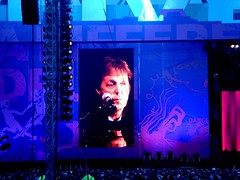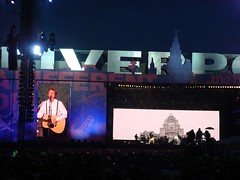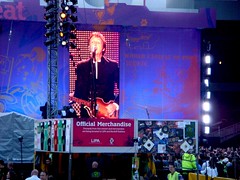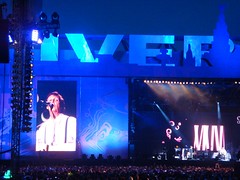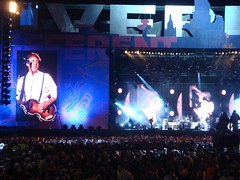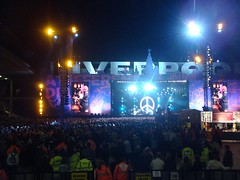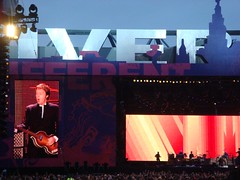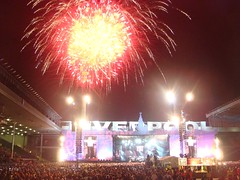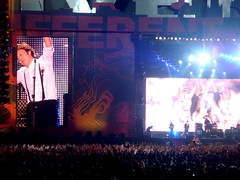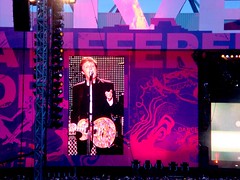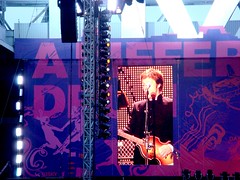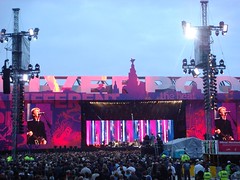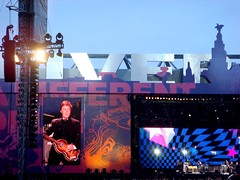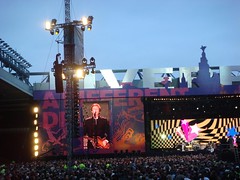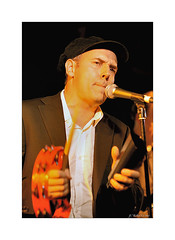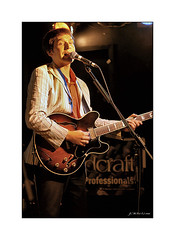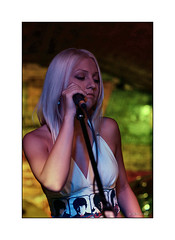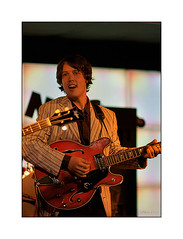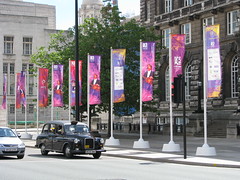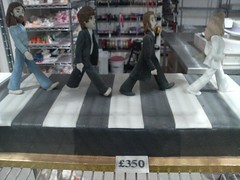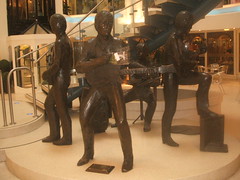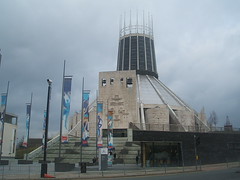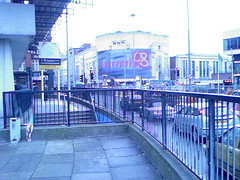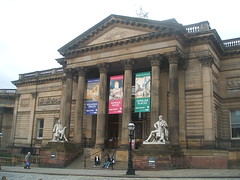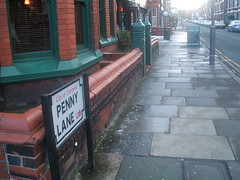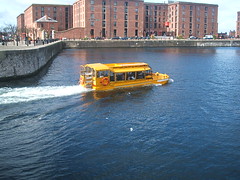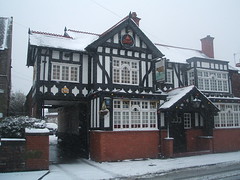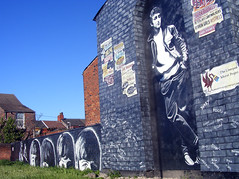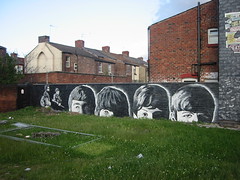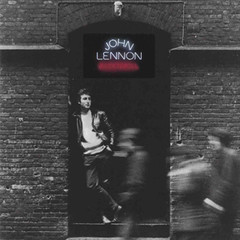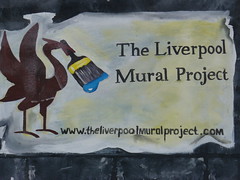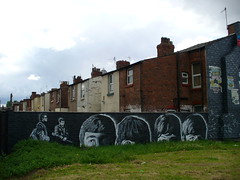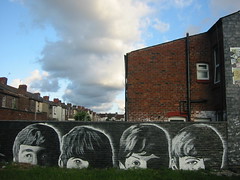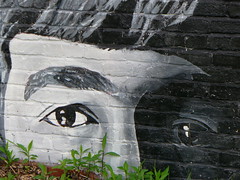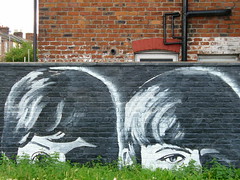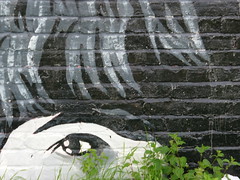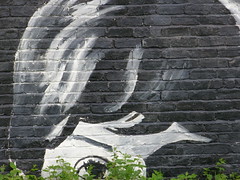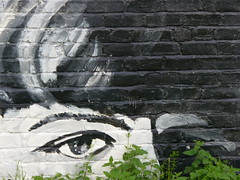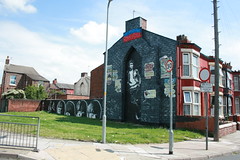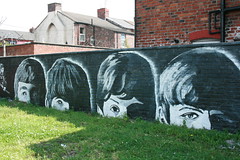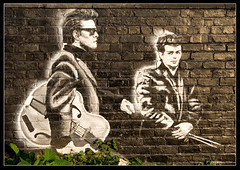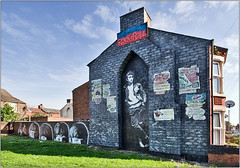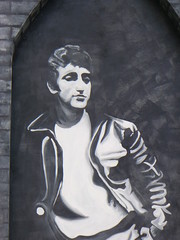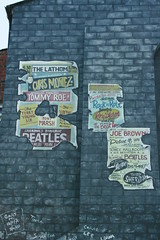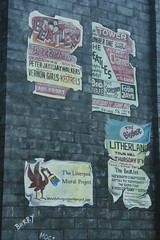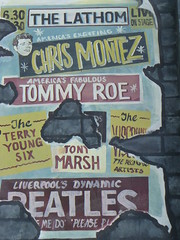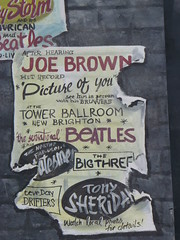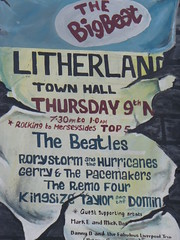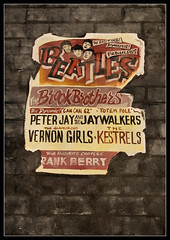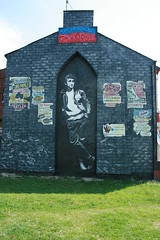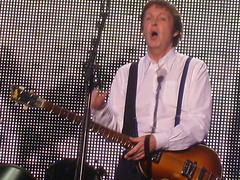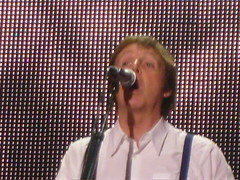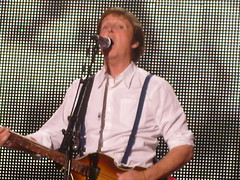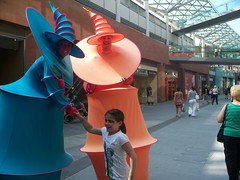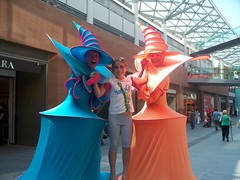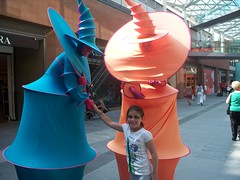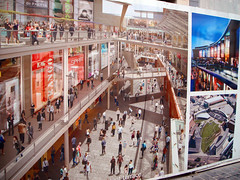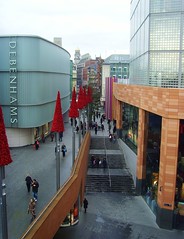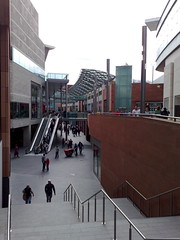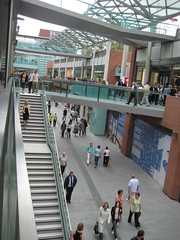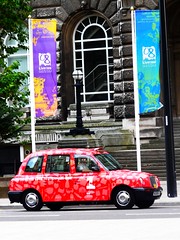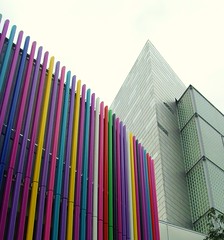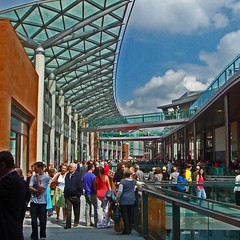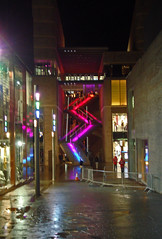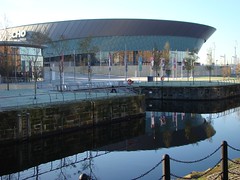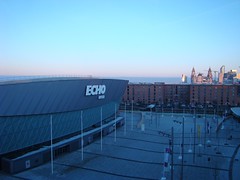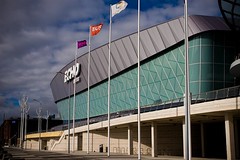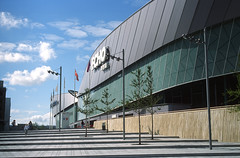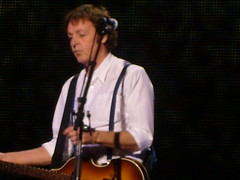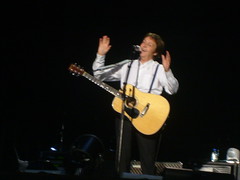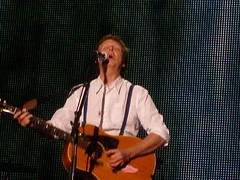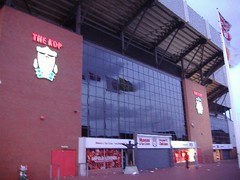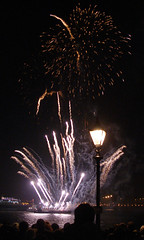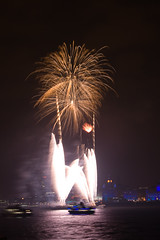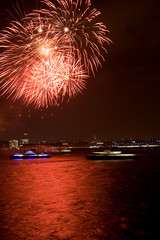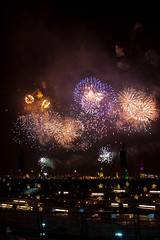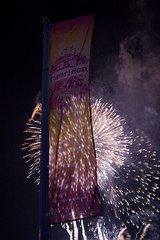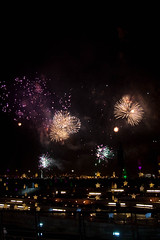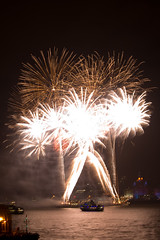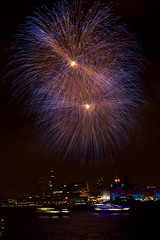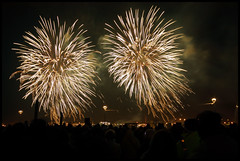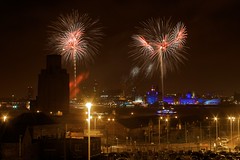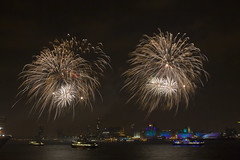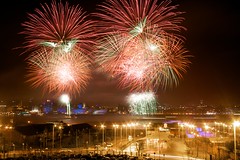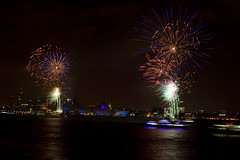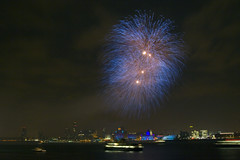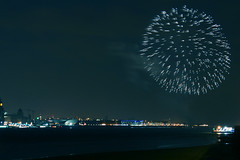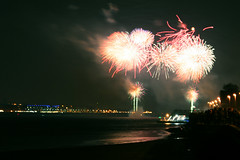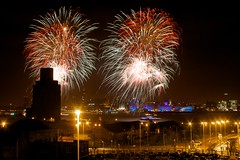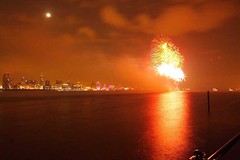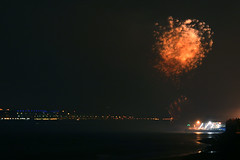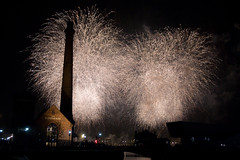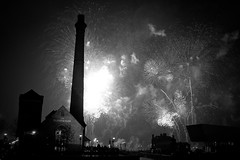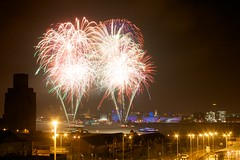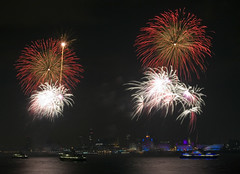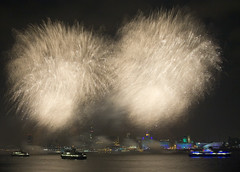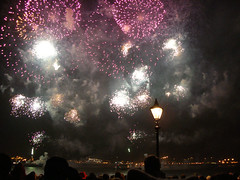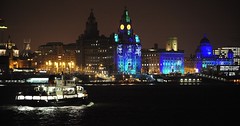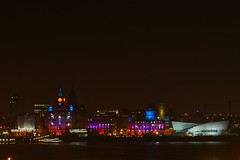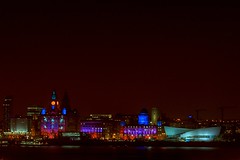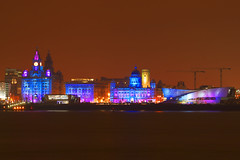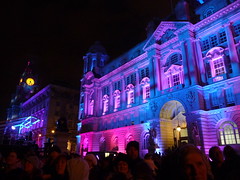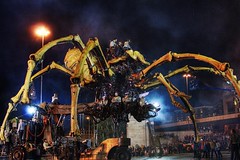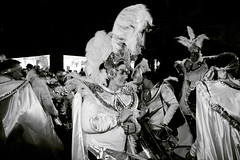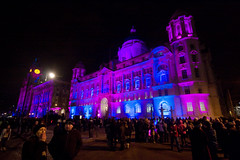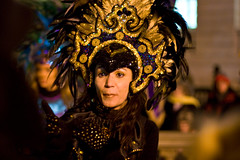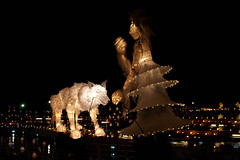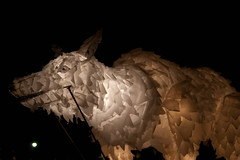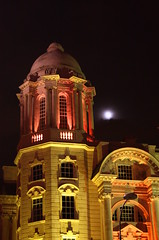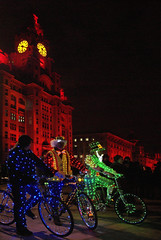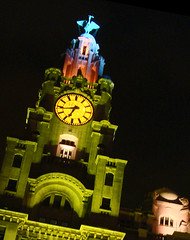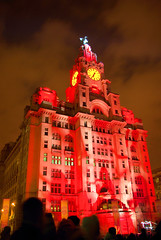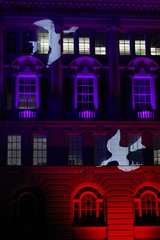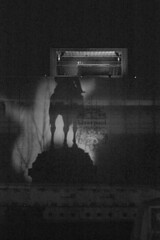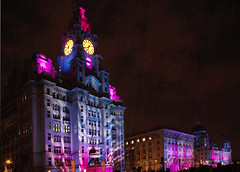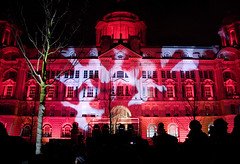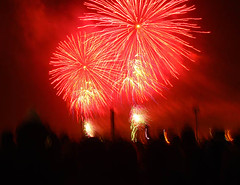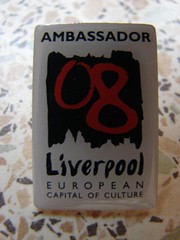
 THE BEATLESTHE CITY OF CULTURE
THE BEATLESTHE CITY OF CULTUREMay 17, 2008 Edition 1
Carol Lazar
Welcome to Liverpool, the European City of Culture for 2008. The banners are everywhere and Liverpudlians are rejoicing in their new cultural status. Listen, they've always had culture, but there's culture and culture.
The Merseyside culture is widely known and it's called Beatles culture. Mention Liverpool and everyone thinks John, Paul, George and Ringo …"He loves me , yeah, yeah, yeah…"
So here we were, four Australian and one South African journalist invited to sample the cultural delights of Liverpool.
What's more, we were the first "normal" guests, we were told by the lass behind the counter, to check into spanking new Hard Days Night Hotel that had opened two weeks before.
They'd had all the "celebrities" but we were the first normals.
Normals? I looked at my Australian colleagues and wondered.
The entire hotel, as you might imagine, has been created around the Beatles from the gigantic statues of each one peeping from their massive niches on the hotel's outer wall to the Beatlemania inside.
Each public and private room is themed and I slept in my queen-sized bed beneath the Fab Four. Lucky me. Oh, that the ghost of John Lennon would have risen …
Because the hotel is brand new, there were glitches. The entrance light to my room didn't work and the passage was narrow and dark. "Quite vibey," isn't it, said the receptionist when I asked for the bulb to be replaced. Well, vibe was obviously in because it never was, so I did the stumble, stumble, grope bit when I returned home late at night.
Which was every night in Liverpool due to the fact we were boogying the nights away at the legendary Cavern nightclub right next door.
John Lennon, Paul McCartney, George Harrison and Ringo Starr began jamming around - well John and Paul did - when they were still at school. Both clever boys, they did well at school, though, the brightest academically was George Harrison - that's some of the trivia we picked up on a Beatles Tour the next day, but more of that later.
Anyway, the boys began playing at the Cavern nightclub - though in those days, Pete Best was the drummer at first.
So how did the Beatles meet? Well, on July 6, 1957, a schoolboy band, a skiffle group known as the Quarry Men formed by 16-year-old John Lennon was playing at St. Peters Church.
Fourteen-year-old Paul McCartney happened along and well, the rest, is sort of history. Though Paul only officially joined the Quarry Men in October that year.
They played at gigs all over Liverpool, mainly at churches and schools, and practiced at all the boys' homes, but mainly at Mendips, where John Lennon was brought up by his beloved Aunt Mimi and her husband George.
John lived at Mendips from the age of 5 until 23, when, as a famous Beatle, he moved to London. Mendips, by the way, is exactly as it was when John Lennon lived there, as is Paul McCartney's house. Go on the right tour, as we did, and you get to see the inside of the houses. And fascinating it is.

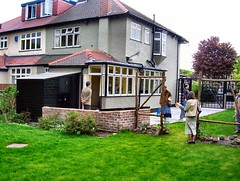
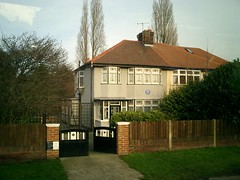
John Lennon's house, Mendips, 251 Menlove Avenue.
An Oz mate and I stood on the tiny step at the Lennon house and played virtual guitar, as Lennon and McCartney did so long ago. Natch, they were more proficient than we.
To get back to Liverpool, the European City of Culture for 2008.
A famous dock city, the River Mersey runs through it. Interestingly, Liverpool is a multi-cultural city in every way with, among other things, a large Jewish community that dates back at least a century. They sort of got there by default, so to speak.
Said a historian, that when the eastern Jews were fleeing pogroms in Russia and then later in Germany and the rest of Eastern Europe, they made their way across Europe and many boarded ships hoping to sail to the New World.
But what did they know? After days and days at sea, huddled together uncomfortably, seasick and miserable, they arrived at Liverpool and they were overjoyed. They had, they thought, reached America.
And so thousands of them disembarked … and thus the Jewish community of Liverpool was born.
Then there's the large Catholic community that fled from Ireland even earlier, during the potato famine of the mid-1800s, then The Troubles not so long ago …
Not to forget the large and vibrant influx of new Liverpudlians from Africa, India and Pakistan.
In every way, Liverpool is truly and attractively diverse.
We were taken on a city tour past the Georgian Liverpool Town Hall built in 1754. And yes, in 1964, the Beatles were feted there when the Lord Mayor of the time asked them to daintily sip tea in his parlour.
We passed the city's famous Empire Theatre, where yes, as the Quarry Men they auditioned and played, then later returned to wow Liverpool as The Beatles.
Liverpool has its fair share of glorious buildings, take the elegant St Georges Hall, completed in 1854, Graeco-Roman style, it is used for special occasions and is open for public viewing, but our time was limited so instead we trotted past the Temple Building, today conceivably the best student residences in England.
One of the most historical parts of Liverpool is the Albert Dock and do yourself a favour, spend time there. Here you'll find the Tate Liverpool and we arrived just before a definitive exhibition of Gustav Klimt's work was to begin. Dammit. I almost cried.
We lunched at the Tate's mediocre cafeteria-type restaurant and then took ourselves off to The Beatles Story, at the Beatles Museum. This all, by the way, happens at the Albert Dock.
The converted warehouses (dating from 1846) are listed buildings and within some of these, the Beatles Story takes place. Step into the story and you go back in time in every way. You'll walk back into the Beatles' lives, their homes, their jam sessions. You'll hear their voices, listen to the music… ah, that music … and you'll see their original instruments.
You'll hear who composed which songs, you'll check out the concerts, their gigs. The Beatles Story is one of those things you have to do in life.
Also mandatory on the tour is a visit to the Best house where the the Quarry Men (with Pete Best) Cascades Club was formed and the emerging Beatles practiced and played. Peter Best was then replaced by Ringo Starr. Many still today say it was a "bad swop". Then there's the drive down Penny Lane and Strawberry Fields - yes, there is a meadow by that name.
Then, that night, when you're feeling mellow after a good dinner at one of Liverpool's multi-cultural eateries, take yourself off to the Cavern, listen to the look-alike Beatles bands and dance until 2,3,4 am. It's great exercise and you won't want to leave.
But, Liverpool is also famous for a cultural activity of another sort. Football. So as part of the tour you will visit the famous Liverpool Football Club at Anfield Stadium. On June 1, Sir Paul McCartney is hosting the flagship event of the 2008 European Capital of Culture Year, a concert that locals say will make the stadium's roof lift into the air. The Liverpool Football Club Museum at the stadium, is another must-see tour especially if you're a football fanatic. Even if you're not, it's worth a cultural investigation. Oh, and if you're keen on football, then go and see a match. There were three tickets available one night, but the Australians, all much bigger than me, grabbed them first! Never mind, we, the leftovers, went to a restaurant called the Club Cubana (I think) and ate until the early hours.
On your tour, you'll drive past John and Paul's school, the former Liverpool Institute which today is the highly regarded Liverpool Institute for Performing Art. Aspiring performers come to study here from all over the world. Sir Paul has given millions of pounds to the Institute so that youngsters can get a good basic arts training. Hopefully, there are generations of other fine performers waiting to happen.
The tour takes you past The Beatles Shop, down Matthews Street, past the Cavern, past the Eleanor Rigby Statue, and White Star and The Grapes Pub. This is a great city for enjoying a cultural beer or two.
On late afternoon, we visited the Brewery Tap at the historical Robert Cain Brewery. South Africans will enjoy this trip and the beer was most drinkable too.
Oh, finally, I forgot one of the most important things of all. The liver bird, the symbol of Liverpool. And please take note, "liver" rhymes with "diver" not "river". So is there a liver bird? Yes. No. Maybe.
The city's first corporate seal, a bird, dates from the 1350's when Liverpool was a small town. It was King John who granted Liverpool's charter in 1207 and he was partial to using eagles as a seal.
It is believed by some the eagle-type bird evolved into a cormorant (commonly seen off shore from Liverpool). In 1668, the Earl of Derby gave the town a mace engraved with a "leaver", a bird that is believed to have existed during this time. But could he have meant a lefler, a Dutch bird resembling a spoonbill? The sprig in the liver's mouth is described as anything from a royal sprig to a piece of seaweed.
No matter, the Liver Building has twin clock towers and on each tower perches a large flap-winged liver bird. One male, the other female.
According to legend, the female looks out to sea ensuring that sailors return safely home, while the male looks towards the city to make sure that all the pubs are open.
Yeah, that sounds about right.
There's another saying that when a genuine virgin passes by, the birds flap their huge wings. However, that hasn't happened for over 100 years, say locals with wide grins.
A third lesser liver bird lives on the Mersey Chambers office building adjacent to the Church of Our Lady and St. Nicholas parish church, while a fourth liver now resides in the Merseyside Maritime Museum.
So, to get back to culture of a different kind. Liverpool has a programme of events that will keep the most exacting culture vulture twittering. And, when you have an overdose, you can always get back to the Beatles. What could be better?
Carol Lazar was hosted on her trip to Liverpool by VisitBritain.
www.thestar.co.za/index.php?fArticleId=4406758


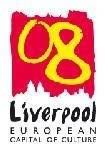


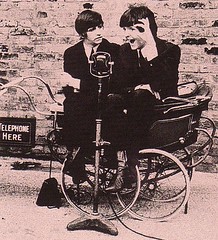

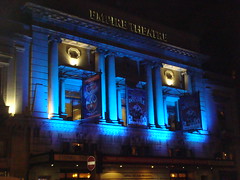
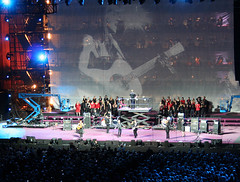
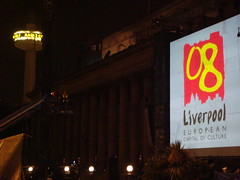
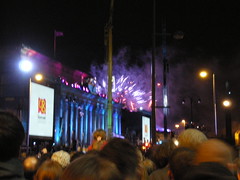

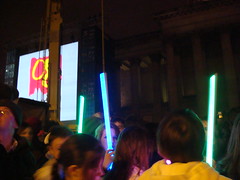












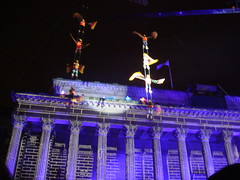
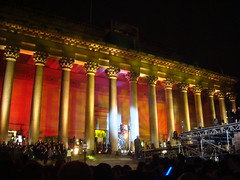



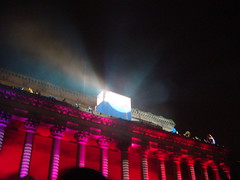
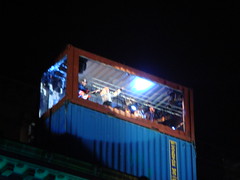
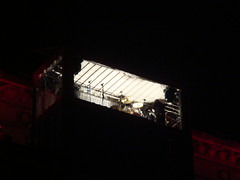

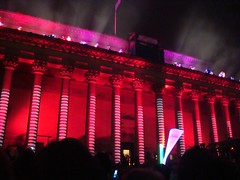
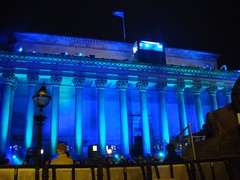























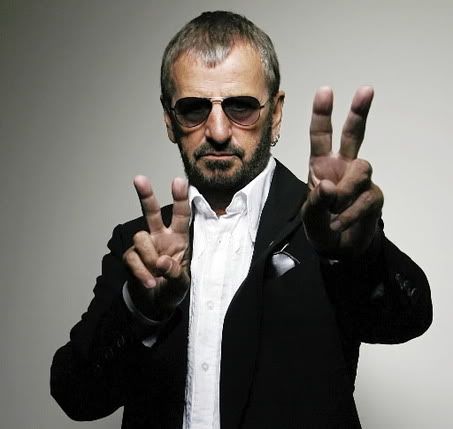



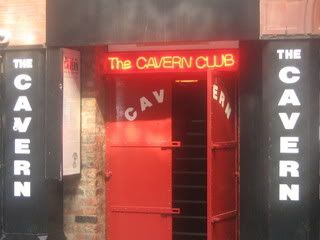






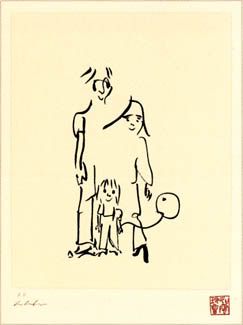
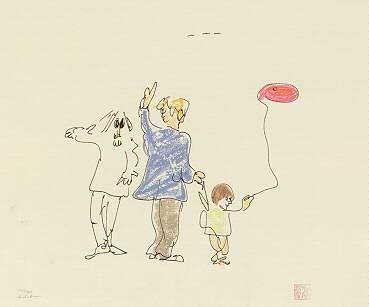
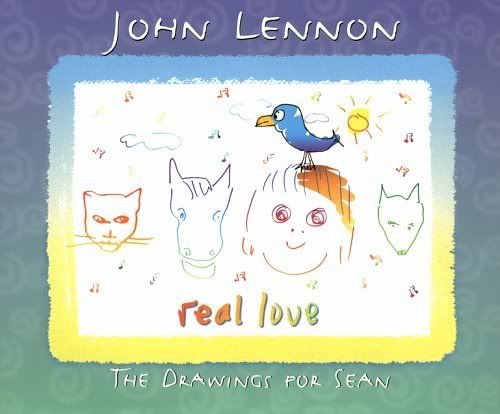
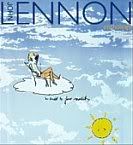
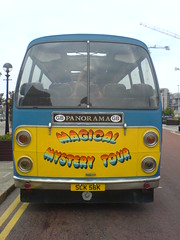
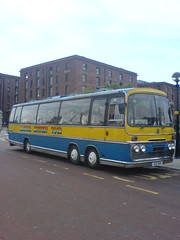
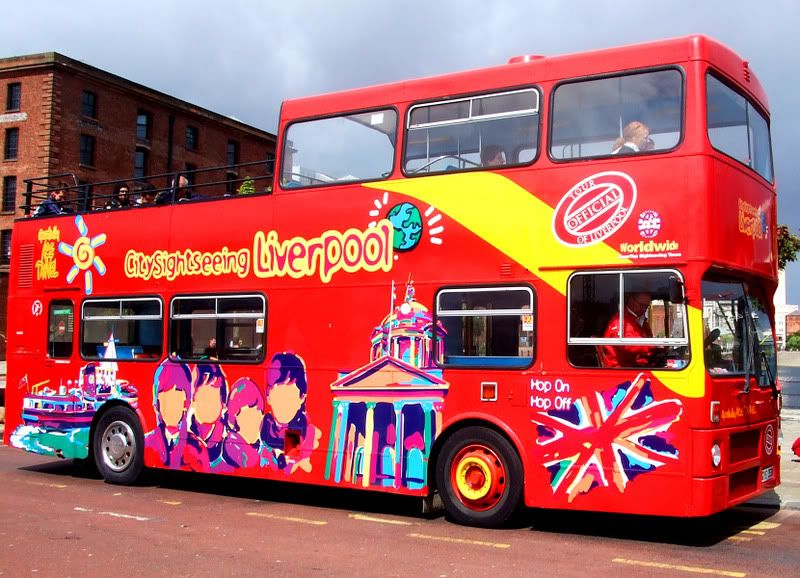
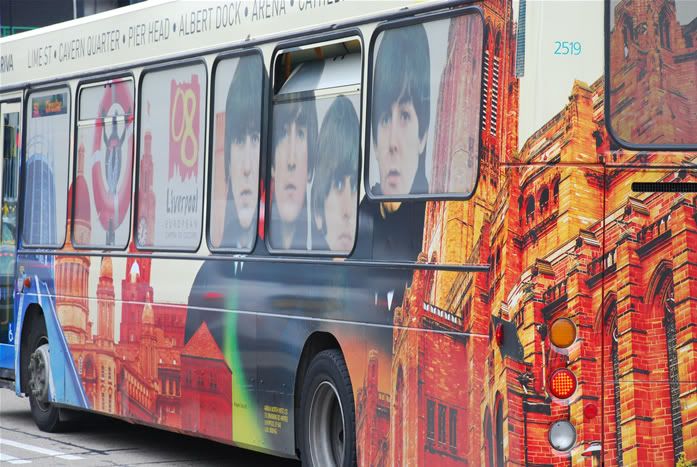


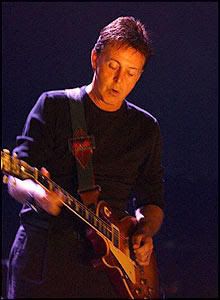
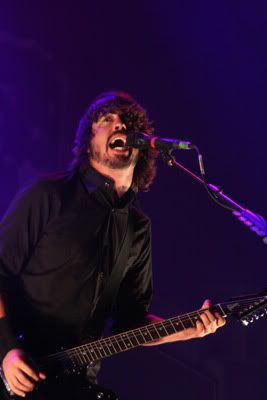



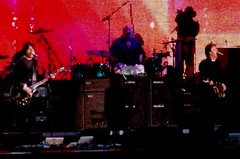

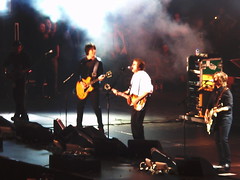
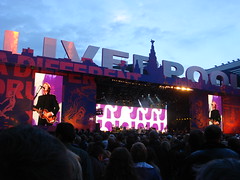
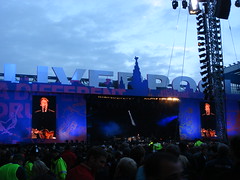



















 I have yet to see Paul in concert, and hope maybe one day I will. Can't complain too much, because I only have a month-and-a-half till Ringo comes.
I have yet to see Paul in concert, and hope maybe one day I will. Can't complain too much, because I only have a month-and-a-half till Ringo comes.  These Youtube links kept freezing up on me, so hopefully they'll have this Liverpool performance on DVD before too long. Age in no way prevents Sir Paul from being magnificent! They're be no worries when he's 74!!! Of course; my thanks to the spirit of Brian for making all this possible.
These Youtube links kept freezing up on me, so hopefully they'll have this Liverpool performance on DVD before too long. Age in no way prevents Sir Paul from being magnificent! They're be no worries when he's 74!!! Of course; my thanks to the spirit of Brian for making all this possible. 
